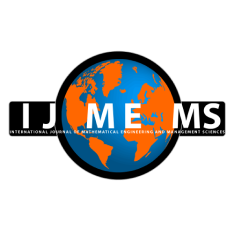Shagun Sharma
Chitkara University Institute of Engineering and Technology, Chitkara University, Punjab, India.
Kalpna Guleria
Chitkara University Institute of Engineering and Technology, Chitkara University, Punjab, India.
Sushil Kumar
Department of Computer Science and Engineering, G. B. Pant DSEU Okhla I Campus, Delhi, India.
Sunita Tiwari
Department of Computer Science and Engineering, G. B. Pant DSEU Okhla I Campus, Delhi, India.
DOI https://doi.org/10.33889/IJMEMS.2023.8.5.059
Abstract
Skin diseases are commonly identified problems all over the world. There are various kinds of skin diseases, such as skin cancer, vulgaris, ichthyosis, and eczema. Vitiligo is one of the skin diseases that can occur in any area of the body, including the inner part of the mouth. This type of skin can have immense negative impacts on the human body, involving memory issues, hypertension, and mental health problems. Conventionally, dermatologists use biopsy, blood tests, and patch testing to identify the presence of skin diseases and provide medications to patients. However, these treatments don't always provide results due to the transformation of a macule into a patch. Various machine learning (ML) and deep learning (DL) models have been developed for the early identification of macules to avoid delays in treatments. This work has implemented a DL-based model for predicting and classifying vitiligo skin disease in healthy skin. The features from the images have been extracted using a pre-trained Inception V3 model and substituted for each classifier, namely, naive Bayes, convolutional neural network (CNN), random forest, and decision tree. The results have been determined as accuracy, recall, precision, area under the curve (AUC), and F1-score for Inception V3 with naive Bayes as 99.5%, 0.995, 0.995, 0.997, and 0.995, respectively. The Inception V3 with CNN has achieved 99.8% accuracy, 0.998 recall, 0.998 precision, 1.00 AUC, and 0.998 F1-score. Further, Inception V3 with random forest shows 99.9% accuracy, 0.999 recall, 0.999 precision, 1.00 AUC, and 0.999 F1-score values whereas, Inception V3 with decision tree classifier shows an accuracy value of 97.8%, 0.978 recall, 0.977 precision, 0.969 AUC, and 0.977 F1-score. Results exhibit that Inception V3 with a random forest classifier outperforms in terms of accuracy, recall, precision, and F1-score, whereas for the AUC metric, Inception V3 with a random forest and Inception V3 with CNN have shown the same outcomes of 1.00.
Keywords- InceptionV3, Convolutional neural networks, Vitiligo, Naive Bayes, Random forest, Decision tree.
Citation
Sharma, S., Guleria, K., Kumar, S., & Tiwari, S. (2023). Deep Learning based Model for Detection of Vitiligo Skin Disease using Pre-trained Inception V3. International Journal of Mathematical, Engineering and Management Sciences, 8(5), 1024-1039. https://doi.org/10.33889/IJMEMS.2023.8.5.059.



